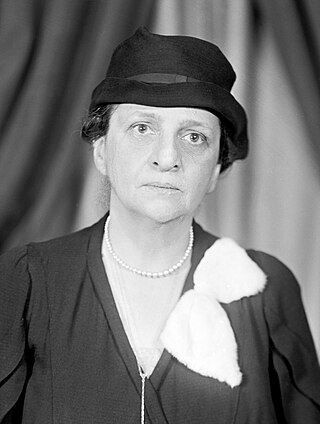
Frances Perkins was an American workers-rights advocate who served as the fourth United States Secretary of Labor from 1933 to 1945, the longest serving in that position. A member of the Democratic Party, Perkins was the first woman ever to serve in a presidential cabinet. As a loyal supporter of her longtime friend, President Franklin D. Roosevelt, she helped make labor issues important in the emerging New Deal coalition. She was one of two Roosevelt cabinet members to remain in office for his entire presidency.
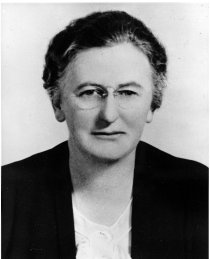
Mary Williams Dewson (1874–1962) was an American feminist and political activist. After graduating from Wellesley College in 1897, she worked for the Women's Educational and Industrial Union. She became an active member of the National Consumers League (NCL) and received mentorship from Florence Kelley, a famous advocate for social justice feminism and General Secretary of the NCL. Dewson's later role as civic secretary of the Women's City Club of New York (WCCNY) led to her meeting Eleanor Roosevelt, who later convinced Dewson to be more politically active in the Democratic Party. Dewson went on to take over Roosevelt's role as head of the Women's Division of the Democratic National Campaign Committee. Dewson's "Reporter Plan" mobilized thousands of women to spread information about the New Deal legislation and garner support for it. In connection with the Reporter Plan, the Women's Division held regional conferences for women. This movement led to a historically high level of female political participation.

Rose Schneiderman was a Polish-born American labor organizer and feminist, and one of the most prominent female labor union leaders. As a member of the New York Women's Trade Union League, she drew attention to unsafe workplace conditions, following the Triangle Shirtwaist Factory fire of 1911, and as a suffragist she helped to pass the New York state referendum of 1917 that gave women the right to vote. Schneiderman was also a founding member of the American Civil Liberties Union and served on the National Recovery Administration's Labor Advisory Board under President Franklin D. Roosevelt. She is credited with coining the phrase "Bread and Roses," to indicate a worker's right to something higher than subsistence living.

The Women's Trade Union League (WTUL) (1903–1950) was a U.S. organization of both working class and more well-off women to support the efforts of women to organize labor unions and to eliminate sweatshop conditions. The WTUL played an important role in supporting the massive strikes in the first two decades of the twentieth century that established the International Ladies' Garment Workers' Union and Amalgamated Clothing Workers of America and in campaigning for women's suffrage among men and women workers.
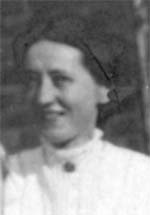
Leonora O’Reilly was an American feminist, suffragist, and trade union organizer. O'Reilly was born in New York state, raised in the Lower East Side of New York City. She was born into a working-class family and left school at the age of eleven to begin working as a seamstress. Leonora O’Reilly’s parents were Irish immigrants escaping the Great Famine; her father, John, was a printer and a grocer and died while Leonora was the age of one, forcing her mother, Winifred Rooney O’Reilly, to work more hours as a garment worker in order to support Leonora and her younger brother.

Mary Kenney O'Sullivan, was an organizer in the early U.S. labor movement. She learned early the importance of unions from poor treatment received at her first job in dressmaking. Making a career in bookbinding, she joined the Ladies Federal Local Union Number 2703 and organized her own group from within, Woman's Bookbinding Union Number 1.
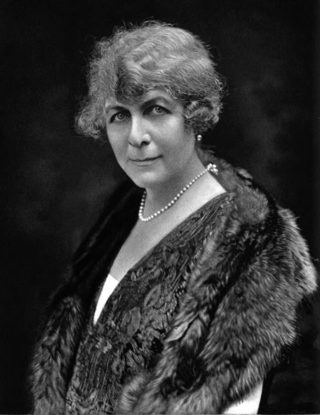
Florence Jaffray "Daisy" Harriman was an American socialite, suffragist, social reformer, organizer, and diplomat. "She led one of the suffrage parades down Fifth Avenue, worked on campaigns on child labor and safe milk and, as minister to Norway in World War II, organized evacuation efforts while hiding in a forest from the Nazi invasion." In her ninety-second year, U.S. President John F. Kennedy honored her by awarding her the first "Citation of Merit for Distinguished Service." She often found herself in the middle of historic events. As she stated, "I think nobody can deny that I have always had through sheer luck a box seat at the America of my times."
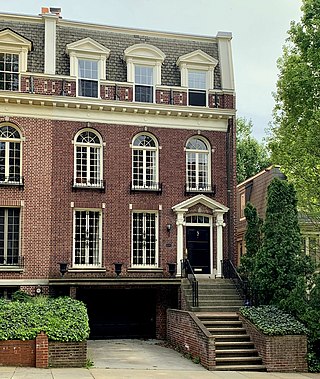
The Frances Perkins House is a historic house at 2326 California Street NW in Washington, D.C. Built in 1914, it was from 1937 to 1940 the home of Frances Perkins (1880-1965), the first woman to serve in the United States Cabinet. Perkins was the Secretary of Labor under president Franklin Delano Roosevelt, and was a major force in advancing his New Deal agenda. This house was declared a National Historic Landmark in 1991.
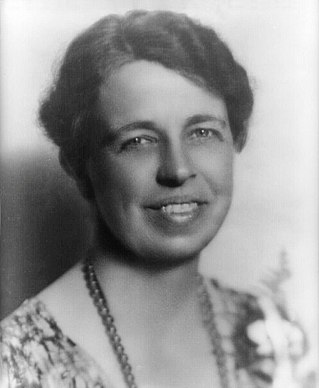
Anna Eleanor Roosevelt was an American political figure, diplomat, pacifist and activist. She was the first lady of the United States from 1933 to 1945, during her husband President Franklin D. Roosevelt's four terms in office, making her the longest-serving first lady of the United States. Roosevelt served as United States Delegate to the United Nations General Assembly from 1945 to 1952, and in 1948 she was given a standing ovation by the assembly upon their adoption of the Universal Declaration of Human Rights. President Harry S. Truman later called her the "First Lady of the World" in tribute to her human rights achievements.
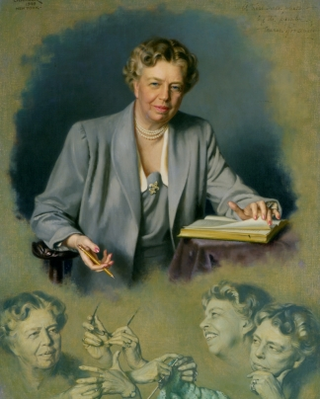
My Day was a newspaper column written by First Lady of the United States Eleanor Roosevelt (ER) six days a week from December 31, 1935, to September 26, 1962. In her column, Roosevelt discussed issues including civil rights, women's rights, and various current events. This column allowed ER to spread her ideas, thoughts, and perspectives on contemporary events to the American public through local newspapers. Through My Day, Roosevelt became the first First Lady to write a daily newspaper column. Roosevelt also wrote for Ladies Home Journal, McCall's, and published various articles in Vogue and other women's magazines.

Lucy Randolph Mason was a 20th-century American labor activist and suffragist. She was involved in the union movement, the consumer movement and the civil rights movement in the mid-20th century.

Mary Harriman Rumsey was the founder of The Junior League for the Promotion of Settlement Movements, later known as the Junior League of the City of New York of the Association of Junior Leagues International Inc. Mary was the daughter of railroad magnate E.H. Harriman and sister to W. Averell Harriman, former New York State Governor and United States Diplomat. In 2015 she was posthumously inducted into the National Women's Hall of Fame.

Pauline M. Newman was an American labor activist. She is best remembered as the first female general organizer of the International Ladies Garment Workers Union (ILGWU) and for six decades of work as the education director of the ILGWU Health Center.
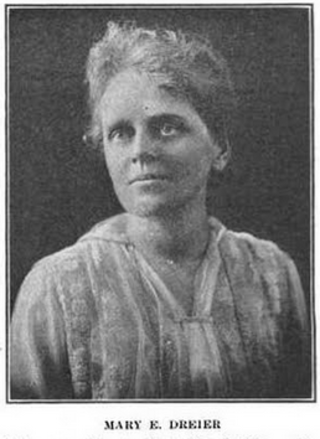
Mary Dreier was an American social reformer in New York.
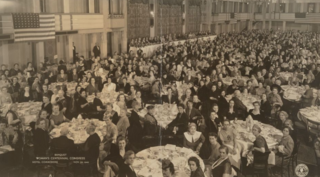
The Women's Centennial Congress was organized by Carrie Chapman Catt and held at the Astor Hotel on November 25-27, 1940, to celebrate a century of female progress.
The First International Congress of Working Women (ICWW), convened by the Women's Trade Union League of America from October 28 to November 6, 1919, was a meeting of labor feminists from around the world. The ICWW planned to share their proposals for addressing women's labor concerns at the First International Labor Conference (ILC) of 1919. ICWW delegates agreed upon a list of resolutions, some of which were taken up by the ILC's Commission on the Employment of Women and resulted in the passage of the Maternity Protection Convention, 1919.
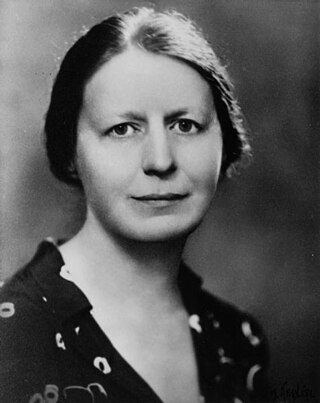
Frieda S. Miller was an American labor activist, government administrator and women's rights activist. She served as the Industrial Commissioner of New York from 1938 to 1942 and the director of the United States Women's Bureau from 1944 to 1953. From 1936 through the 1950s, she worked with the International Labour Organization advising on women's employment issues. In the 1960s, she served in various capacities as a delegate to the United Nations focused on issues for women and children.

Helen Hoy Greeley was an American suffragist, lawyer, and political activist.
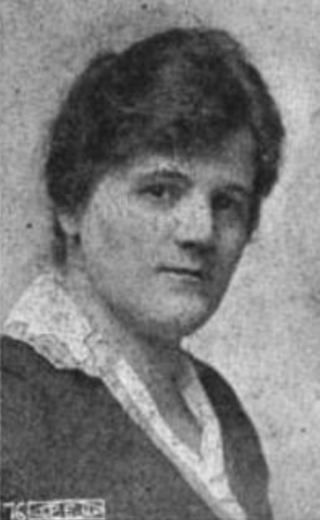
Elisabeth Christman was a trade union organizer.

Charlotte Elizabeth Carr was an American labor activist and state official. She was appointed Pennsylvania's Secretary of Labor and Industry in 1933. She was the head resident at Chicago's Hull House from 1937 to 1942.



















